Few mechanics in Souls games are as iconic as dodging, particularly the effects of equip load on dodging, which can lead to the infamous “fat roll”. Many a new Souls player at some point attempts to mitigate the genre’s difficulty by strapping on armor with big numbers, mistakenly thinking it’ll keep them alive, only to find out that they’ve unintentionally sacrificed their greatest defensive tool - the ability to mitigate damage by dodging. Simply put, the heavier your equipped gear, the more compromised your ability to dodge is, and while some mad lad veterans can make this work, for many players being light is better than being durable - the damage reduction from armor rarely adequately compensates for the extra hits you’ll take by dodging slower. This mechanic has, with some variation, made its way into No Rest for the Wicked, and this page will explain how dodging and your equip load works, and more importantly, how the latter influences the former.
(1 of 3) At fast equip loads you’ll be able to perform a quick step dodge, but you’ll need to wear light armor to keep your equip load down.
Equip Load Effects by Weight Class¶
Dodging is pretty simple in No Rest for the Wicked, you press the 

The more you’re carrying as a proportion of your maximum equip load, the slower you’ll dodge, and this can have a significant effect on your playstyle. If you want to dodge quickly and repeatedly you’ll need to travel light, while if you’re more confident in your ability to perform slower, awkward, floppy dodges with less room for error you can carry more gear. More/heavier gear allows you to bear heavier armor with higher defensive stats, which will lower the damage you take in the likely scenario that you take more hits. If you keep your equip load light you’ll be more likely to dodge attacks, mitigating damage entirely, but you’ll have to wear lighter gear or even leave armor slots empty to keep your equip load low. This means you’ll take more damage if you do get hit and the less armor you have equipped means less passive mods on armor, which may further lower stats like armor, resistances, health, stamina, and all the other good stuff that typically comes on enchanted gear.
You can increase your max equip load by investing points in the Equip Load stat upon level up. Each point invested will increase your max equip load by 10, and the higher your equip load the more you can wear while remaining at lower tiers of encumbrance. This can give you the best of both worlds - faster dodge and the ability to wear more/heavier gear, but of course this ties up points you could have otherwise invested into other stat. All in all, it’s a trade-off; if you want faster dodges you’re going to have lower stats. Mistakes will be more heavily penalized, but you’ll likely take fewer hits. There are pros and cons to each stage of equip load and it ultimately comes down to playstyle preference.
Each of the three dodge types will be discussed in detail below:
(1 of 3) The quickstep dodge allows you to evade most attacks with relative ease, but you still need to be wary of dodging prematurely.
Fast Equip Load - Quickstep¶
Souls games are generally about stamina management, learning the enemy’s attacks, and timing your dodges correctly, with Sekiro and Bloodborne being notable variations on the formula. The former focuses more on parrying while the latter gives the player a superior dodge at the expense of effectively removing shields. If you’re playing No Rest for the Wicked and wanted a more Bloodborne experience, there’s an easy solution - keep your equip load in the “light” category.
So long as your equip load is light, you’ll do a quickstep when you dodge instead of the standard dodge roll, and while this consumes about as much stamina and covers as much ground as a normal dodge roll. The quickstep, however, dashes nigh instantaneously and has little in the way of recovery frames - the majority of the quickstep is i-frames, allowing you to not only mitigate damage, but close ground and dodge through enemy attacks, especially projectiles.
Quickstep is responsive, often capable of mitigating damage, and if you’re something of a newbie who is prone to panic spamming - Bloodborne fans will feel right at home! While it is indeed a useful ability, there are significant downsides. First, dodge spamming is a double-edged sword, as while it’ll keep you from taking damage, it’ll also greedily consume stamina, and spamming dodge will ultimately leave you vulnerable, out of place, and incapable of counterattacking. It’s also important to note that enemies are usually adept at tracking in this game, so while relying on quick step can make things easier, if you dodge too early the enemy can still end up adjusting and landing a hit.
Last but not least, to quickstep you need to keep your equip load in the light category, which means you can’t equip much gear at all. You can mitigate this by dropping points into the Equip Load stat every time you level up, but you’ll do this at the expense of other stats. Even with a significantly boosted Equip Load stat, you won’t be able to wear much gear, and none of it can be particularly heavy. In fact, you’ll need to get used to running around naked at the beginning of the game, which might not be the biggest sacrifice considering what a trap armor tends to be in games like this. Still, you’ll have lower defense and poise due to your equip load limits, so while you’ll ideally take fewer hits, they’ll be more painful when they happen. Just about any time you take a poise-breaking attack (shield bashes, pommel smashes and chargers are common attacks enemies will employ) you’ll be knocked down… but since you can dodge so quick you can usually recover and quickstep out of the before a follow up attack can land, which pretty much encapsulates the give-and-take of the quick step dodge.
The normal dodge is your bread and butter Souls dodge, covering a good bit of ground and being reasonably fast, but also with some recovery time after you land.
Normal Equip Load - Dodge Roll¶
The bread-and-butter dodge roll, you’ll roll quickly in the chosen direction. This covers as much ground as the quick step dodge, but is a bit slower and consumes around the same amount of stamina. You’ll get your iframes at the start of the roll, before you touch the ground, but half of the dodge’s distance happens during the recovery phase, as you continue the roll after touching the ground and ultimately stand up. Timing is a bit for forgiving with this dodge roll than the fat roll (see below), but if the enemy lands a hit while you’re in the recovery phase you’ll take damage, and if you dodge too early the enemy will change their focus and likely hit you anyways. You can’t dodge-spam with the normal dodge roll like you can with the quick-step, either. If you’ve ever played any other Soulslike game before, you’ll know exactly how this works and it should feel familiar.
It’s worth pointing out that the normal equip load section of the equip load gauge is smaller than the light or heavy ends, so you won’t be able to load up on as much armor as you’d expect and stay in the normal range. It’s an obvious middle-ground between the quick step and fat roll, but you’re rewarded with a much faster dodge if you stay light and with much more armor if you’re willing to go heavy.
(1 of 2) At heavy equip loads you’ll be relegated to the infamous “fat roll”, which requires more skill to dodge attacks.
At heavy equip loads you’ll be relegated to the infamous “fat roll”, which requires more skill to dodge attacks. (left), On the plus side, you can also shoulder barge enemies while at a heavy equip load, potentially knocking them prone. (right)
Heavy Equip Load - Fat Roll and Shoulder Barge¶
The slowest of the dodges, once you hit the heavy equip load category you’ll slop onto the ground with the grace of a dying whale, arguably covering more ground vertically than horizontally. After making contact with the ground you’ll ponderously roll back onto your feet with grace and alacrity that would make a quadriplegic tortoise faintly proud. Like with the normal dodge roll the time you spend airborne is when you’re most likely to mitigate damage and after you land and struggle to get back on your feet is your recovery window when you’re most vulnerable. The time you spend airborne is marginal, as is the distance you cover, so if the enemy is in the midst of a combo you’re almost certainly going to take a hit. Positioning is key and you’re arguably safer staying on your feet and just using distance to avoid attacks, only fat dodging when you know an enemy is going for an attack you can dodge, and one with no immediate followup.
Despite looking ridiculous, the fat dodge is either a sign of naivety or of competence. Despite the poise and defense gains of wearing more, heavier armor, they likely won’t carry you to victory against any of the game’s bosses. But a player who knows the downsides of fat dodge and who can work around them probably, by necessity, has a better grasp of the game’s mechanics. Your positioning, anticipation, timing and knowledge of a boss’s attack routines must be on point; thus the paradox that the least graceful characters often have the best players controlling them.
In addition to the statistical boons you’ll gain from wearing more, heavier armor, when your equip load is heavy you’ll be able to perform a shoulder barge attack to knock lighter enemies down. Get near an enemy and press (

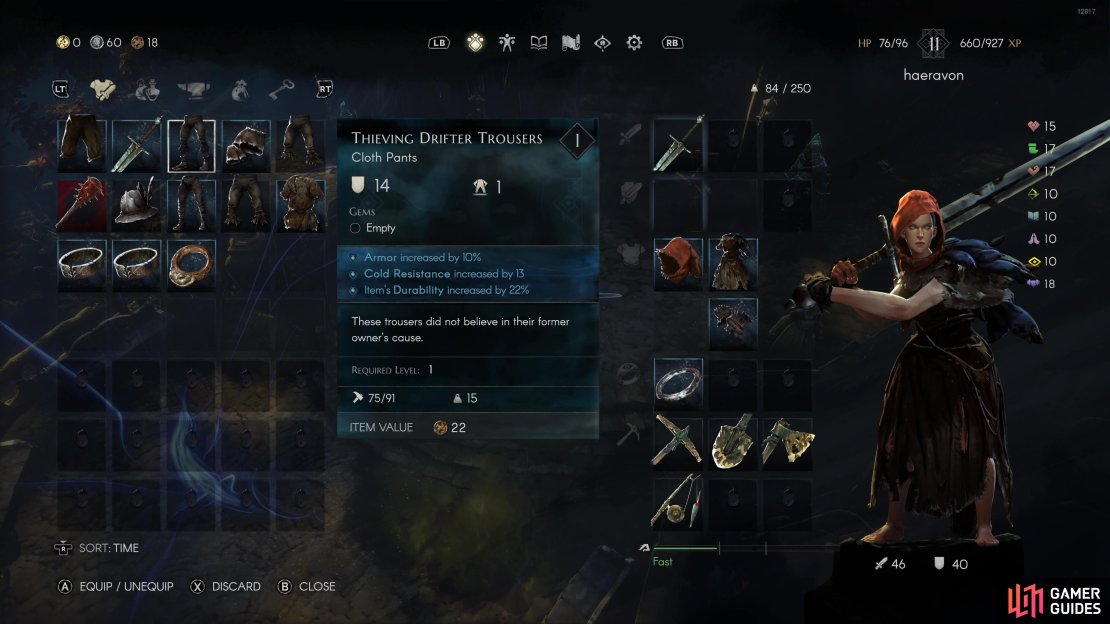

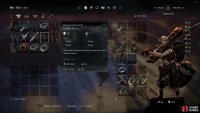
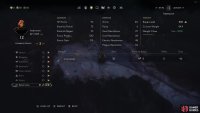
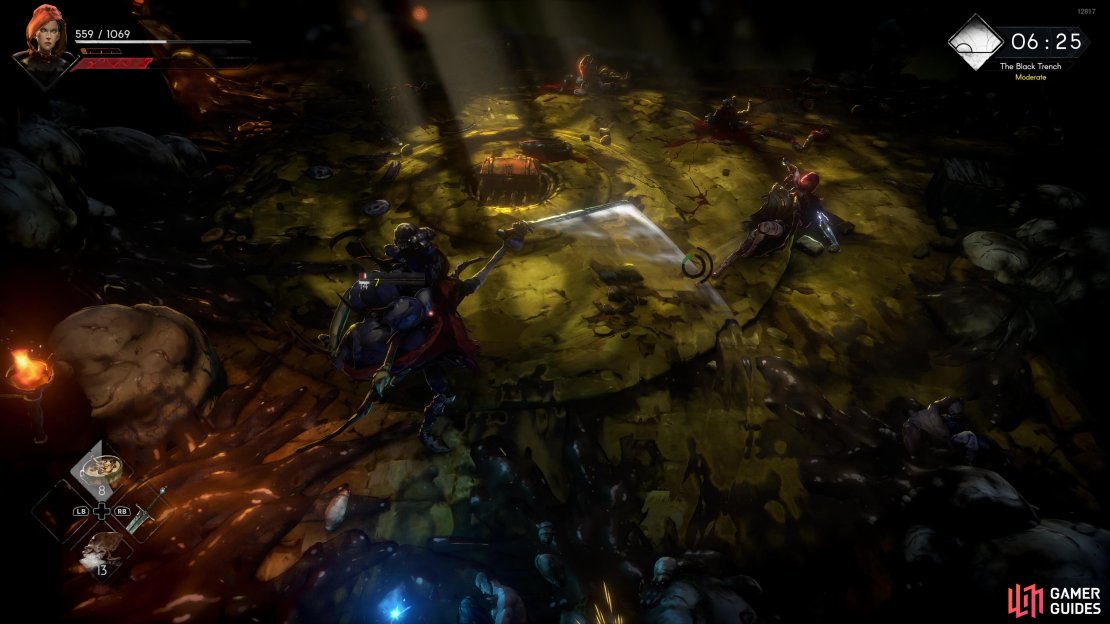



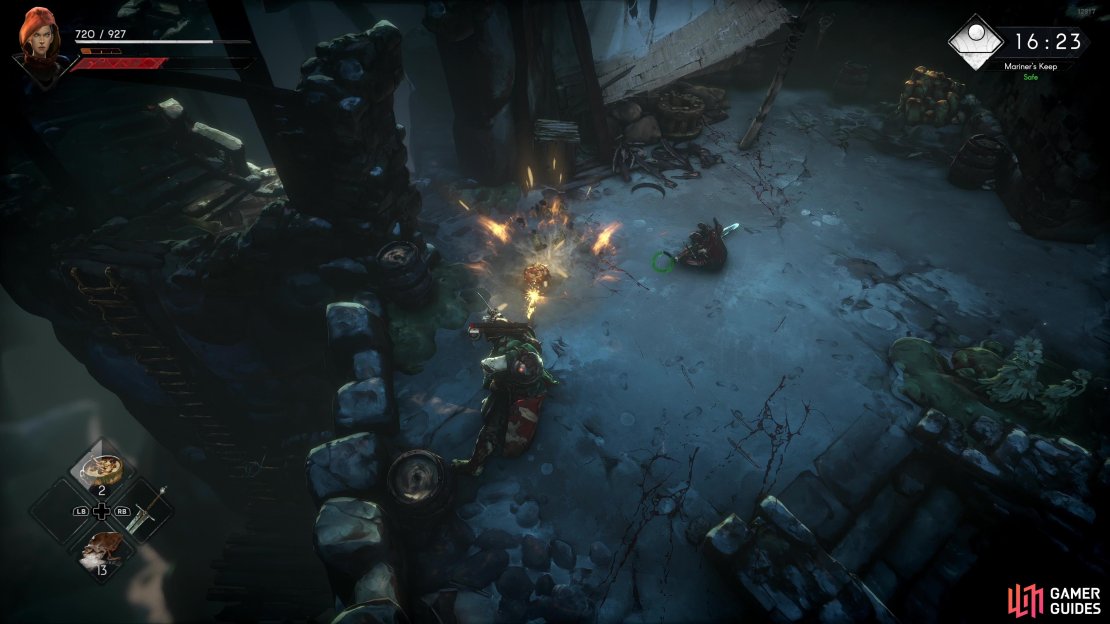
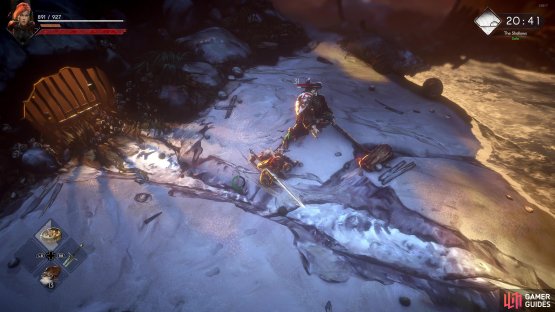



No Comments